When do trees begin growing in spring? Many of us would say when the buds open. When do trees stop growing? Many of us would say when it gets cold in the fall.
We can observe the growth cycle of trees if we look carefully because they leave us clues to their life histories. Here, we will only talk about shoot growth from buds of temperate trees. We will leave the equally interesting stories of root and diameter growth for another day.
Fixed Growth. For the majority of temperate forest trees, especially slower-growing and shade-tolerant trees, shoot growth stops in May or June! That’s right, these trees only grow for a few weeks in spring, and spend the rest of the growing season photosynthesizing and storing nutrients, but mostly at rest.
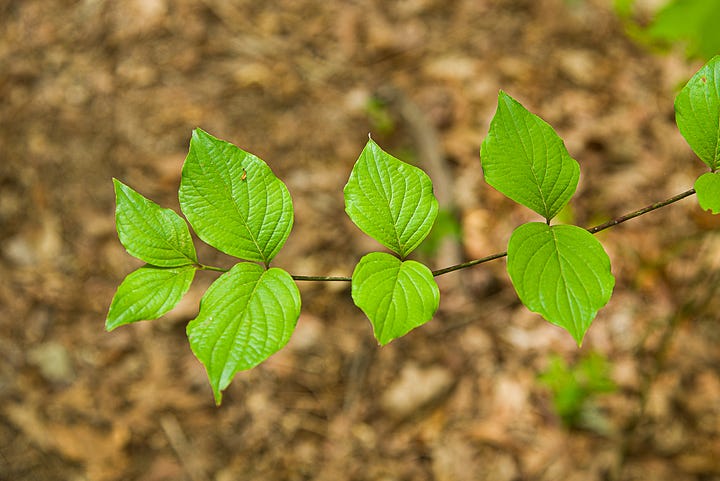
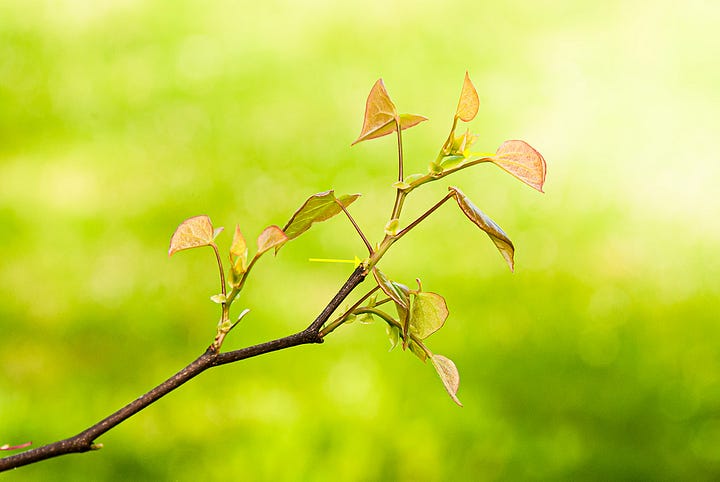
In flowering dogwood, buds open in April and growth is mostly done by May 3 (the date will very slightly between years, but not much). All the leaves you see in the photo above were formed last year and were this size on May 3. No more leaves will grow this year. A bud has already formed, and new leaves will be created in the bud, but will only be seen next year.
In eastern redbud, the same is true. The entire shoot for this year is between the two yellow arrows, bearing a total of 5 leaves. This is also on May 3, and the new bud has begun to form. The leaves are not fully grown, and expansion will take a couple of weeks in a cool spring, but no new leaves will grow this year.
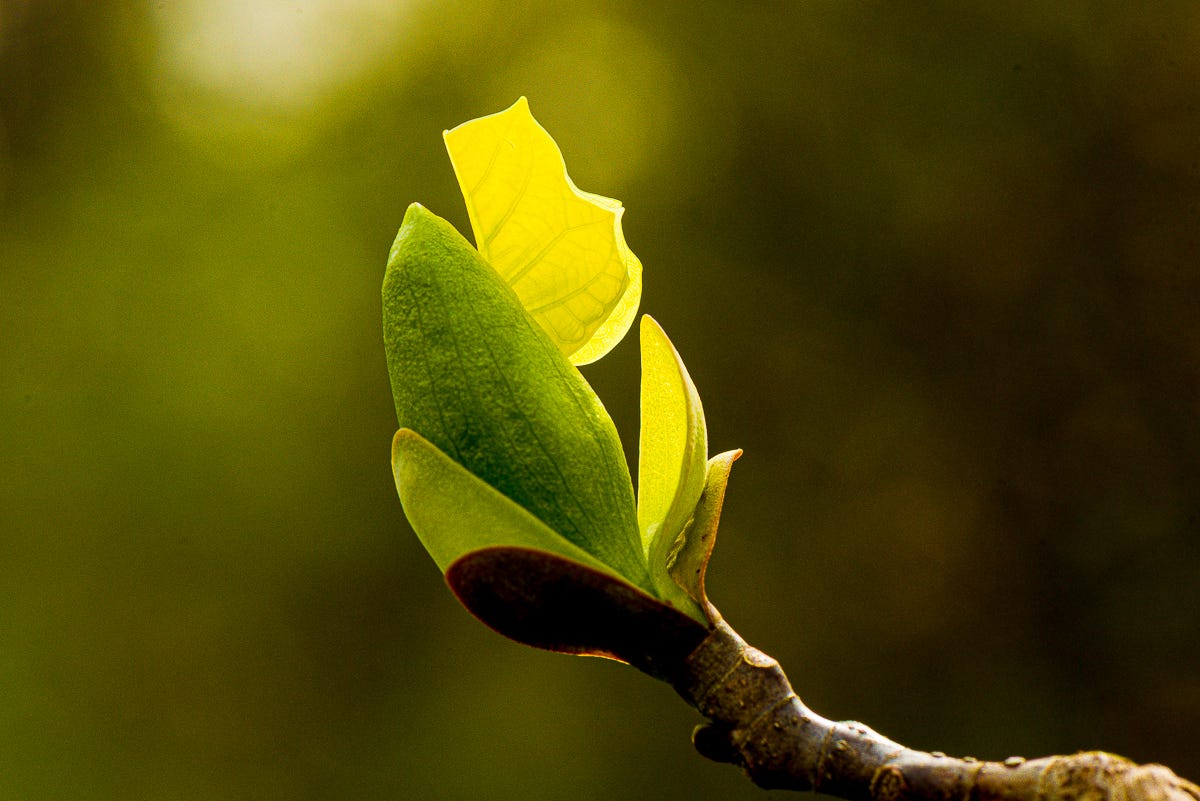
Free Growth. Yellow-poplar (also called tulip-tree) is a fast-growing, early successional tree. It has a different growth strategy. The bud opens and leaves laid down last year enlarge, but then new leaves form in the shoot tip and continue to expand. In a wet year, new leaves may continue to form and expand, and the number of leaves cannot be predicted. Many fast-growing trees fit this pattern, including yellow-poplar, true poplars like cottonwood, and sweetgum.
Recurrent Flushing. This is the most interesting growth pattern, and it is a combination of fixed and free growth. Oaks are a good example of trees with recurrent flushing. In the spring, buds open and growth of leaves laid down last year takes place, ending in spring, as with fixed growth. A bud forms and new leaves are laid down in the bud. If the summer is dry, that’s the end of growth for the year. But if there is a wet summer, especially if rain comes after a dry spell, then magic happens: the buds laid down for next year don’t wait through the winter, but instead, open as if a new spring has arrived. Then, a huge amount of growth can take place.
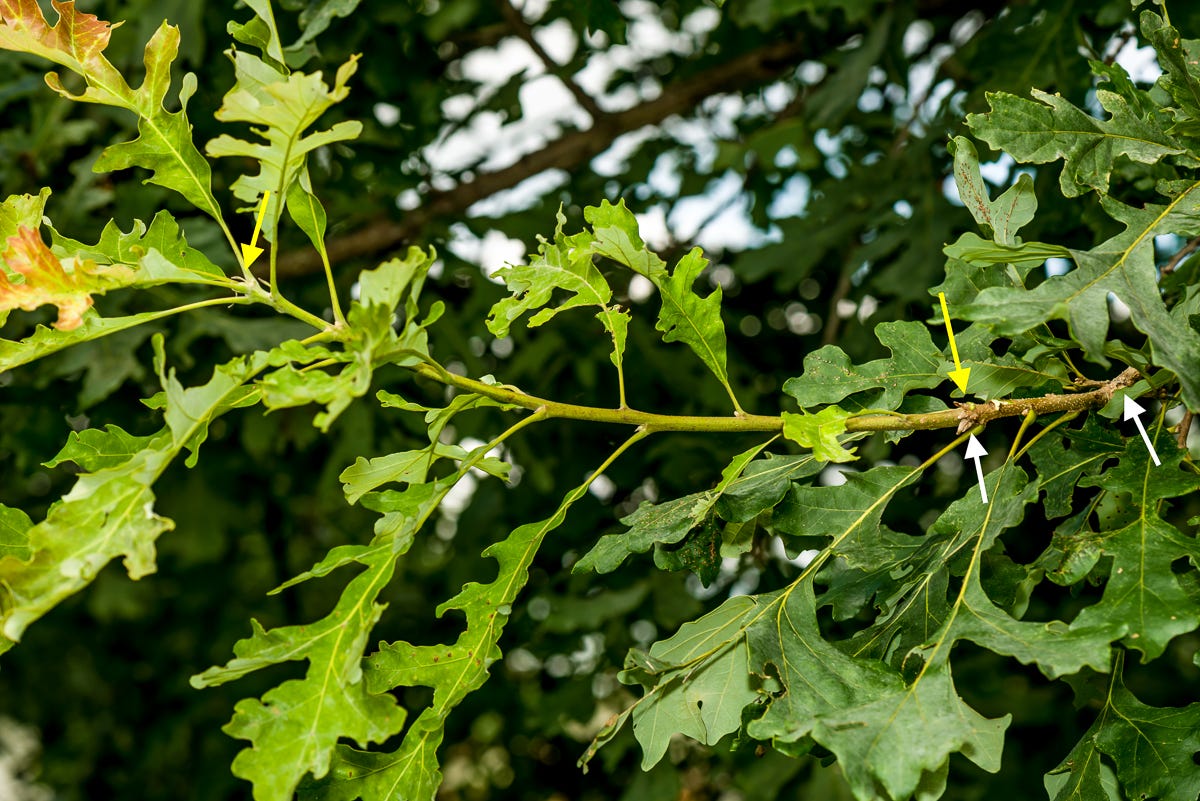
Look at this bur oak. The bud opened in the spring, the shoot and leaves expanded (between the white arrows) and then growth stopped and a new bud formed. Then, it rained a lot and the new bud opened and began producing new leaves and elongating the stem (between the yellow arrows). These late flushes often produce more growth than the spring flush.
Most trees, even the slow-growing ones, can produce recurrent flushes in a wet summer. And sometimes, if rain is intermittent, multiple flushes occur. I have seen 10 flushes in oak trees, though that is exceptional.
Here are a few more examples of recurrent flushing. It can happen in most, perhaps all, temperate hardwood trees if summer rainfall occurs. This is important because it is a telling feature of our changing climate: I see recurrent flushing in most summers in Kentucky, but I saw none the first 10 years I lived here, which was a drier period.
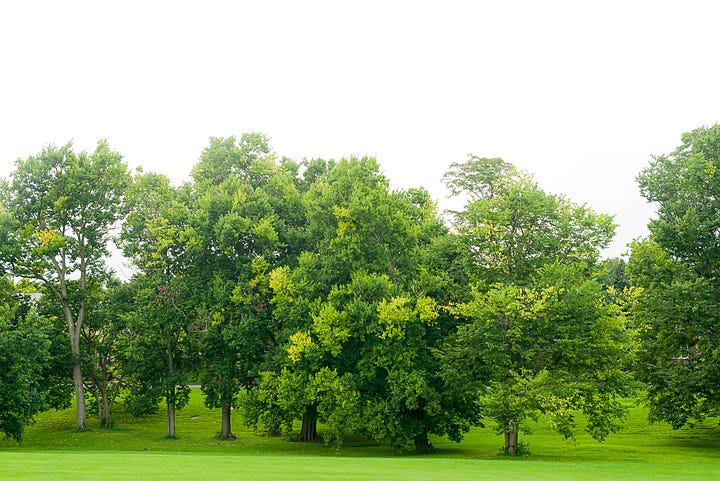
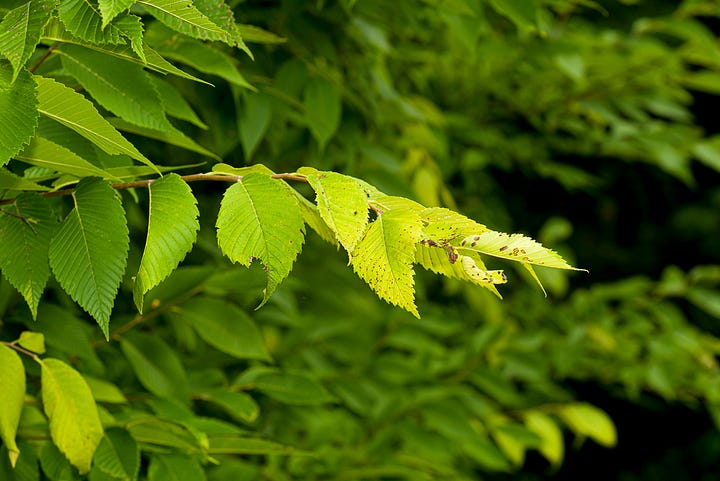
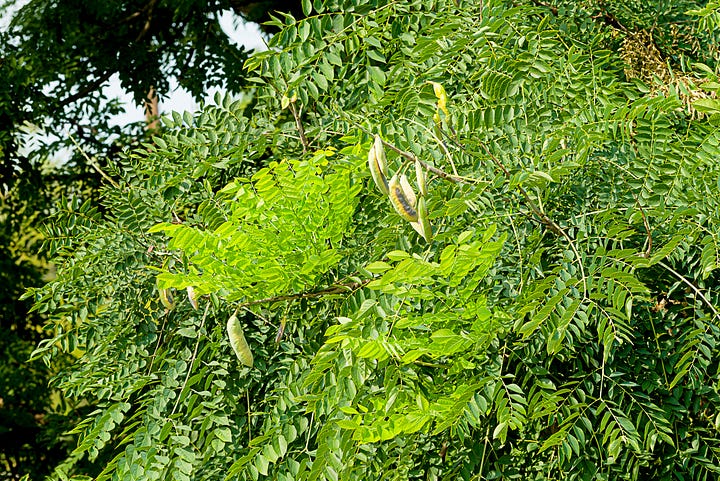
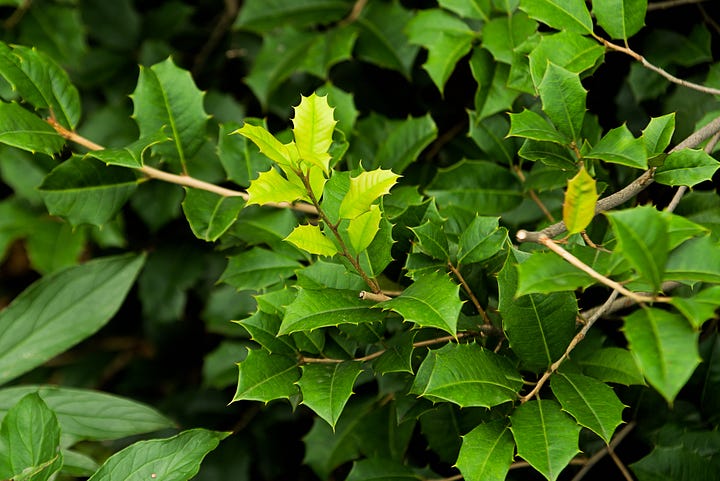
Why do these three behaviors exist? That’s a story for another day.
Note: All photos by the author

I learned something new today, thank you Tom. My love for trees continues to flourish. Maybe I am experiencing a late flush.
Very helpful, Tom, thanks. As I’ve previously mentioned, the seedlings in my nursery- including dogwood and redbud- don’t really start putting on growth until mid summer and continue into September, at least. These are grown in storage containers, btw, and I’m usually late in fertilizing them. Any thoughts?